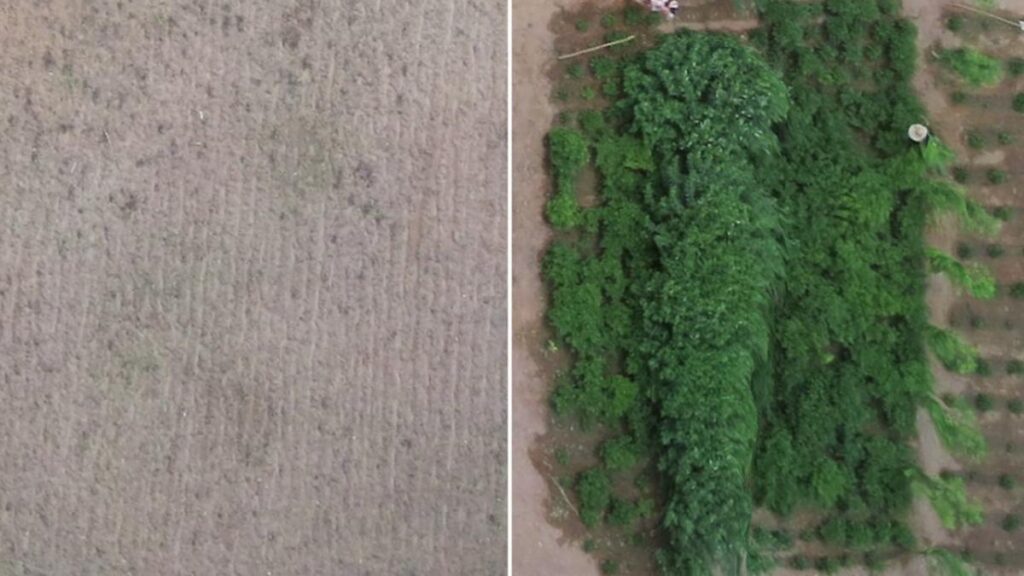A massive tree planting movement is starting to take root in Africa. Thousands of farmers are leaving parched fields behind for lush, diverse forest gardens that feed families, improve soil and expand forest cover.
The project, called Trees for the futureof TREES, has already restored more than 41,000 hectares (about 101,000 acres) since 2015 – that’s seven times the size of Manhattan, as the Guardian reported. The nonprofit organization plants tens of millions of trees every year in nine countries, from Senegal to Kenya. By 2030, it wants to create 230,000 jobs and plant a billion trees.
Earlier this year, the UN Environment Program recognized the country as a World Restoration Flagship the guard.
How does it work? TREES supports small farmers with training, seeds, tools and grants to grow ‘forest gardens’ instead of tired old monocultures. Supporting biodiversity helps to protect the health of the soil. Groups of farmers regularly receive support from leading farmers to maintain plots of approximately 5,800 different trees on just one hectare (2.5 acres).
The woodland gardens have it all: a protective wall of acacia trees, fast-growing trees for firewood and fodder, vegetable patches and fruit orchards full of mangoes, avocados, oranges and more, as the Guardian detailed. It’s the perfect mix to feed a family, with some extras to sell. Moreover, these farmers can earn money for the carbon they emit flowering soil absorbs.
TREES is even part of the African Union Great Green Wall initiative, an epic 5,000-mile-long barrier of vegetation that holds back the advancing desert. According to the Guardian“This will be the largest natural structure in the world.”
Watch now: Furniture company explains why it only produces trend-proof styles
“This is a huge restoration movement that uses regenerative agriculture,” said Vincent Mainga, director of TREES in Kenya, told the news channel. “This model is very easy to apply. We work with the farmers for four years. Then they can understand all the components and use what they learn from our technicians to produce thriving agricultural lands, usually with surplus-retention.”
As Inger Andersen, head of the UN Environment Programme, put it: “Initiatives like TREES play an important role in reversing decades of ecosystem degradation, especially in the Sahel, by combating desertification, increasing climate resilience and improving the well-being of farmers and their communities.”
With big goals and a proven approach, TREES is sowing the seeds of change for a greener future in Africa – and beyond. We can’t wait to see what they will grow next.
Come join us free newsletter for cool news And cool tips that make it easy Help yourself while helping the planet.







